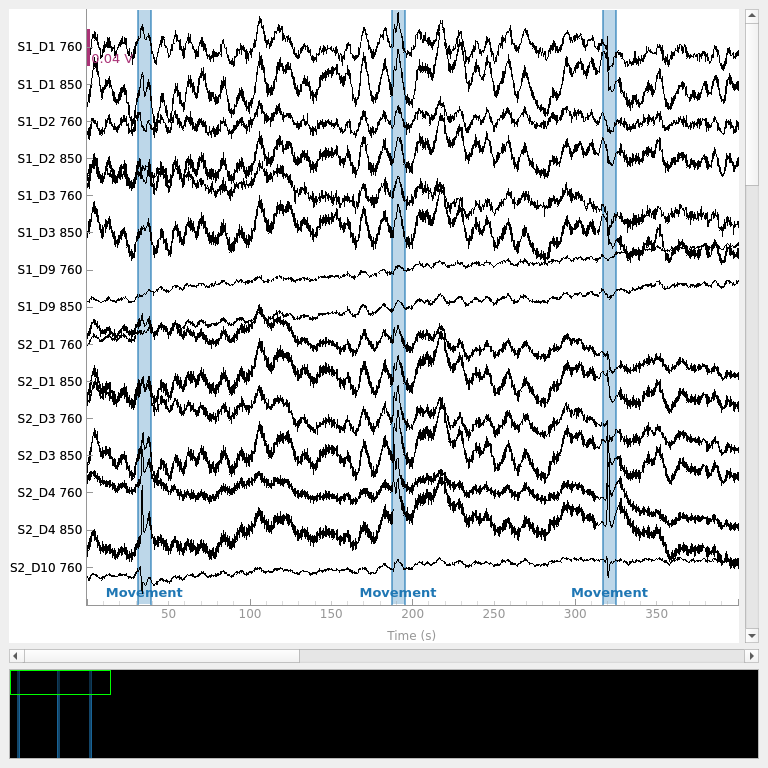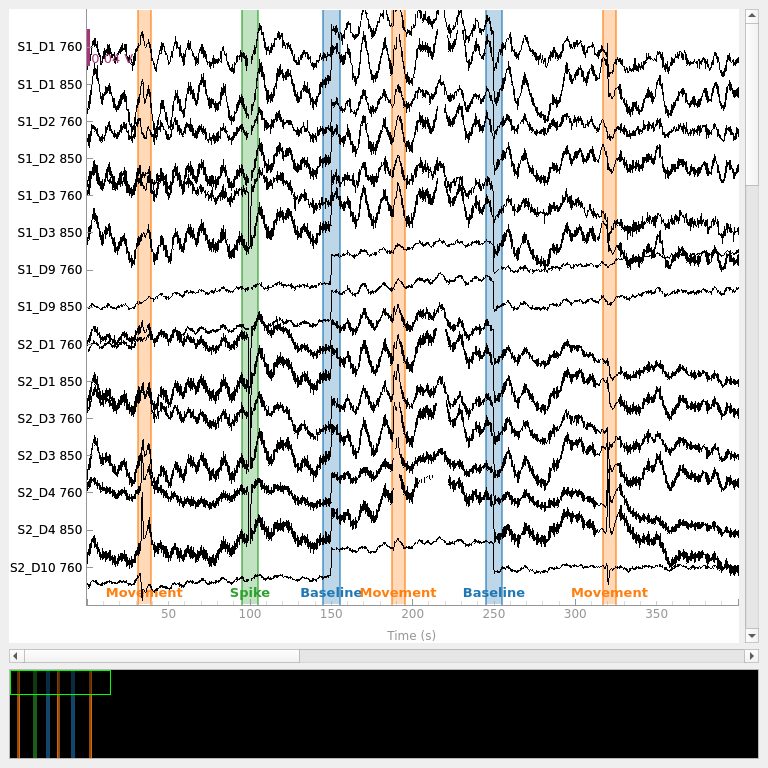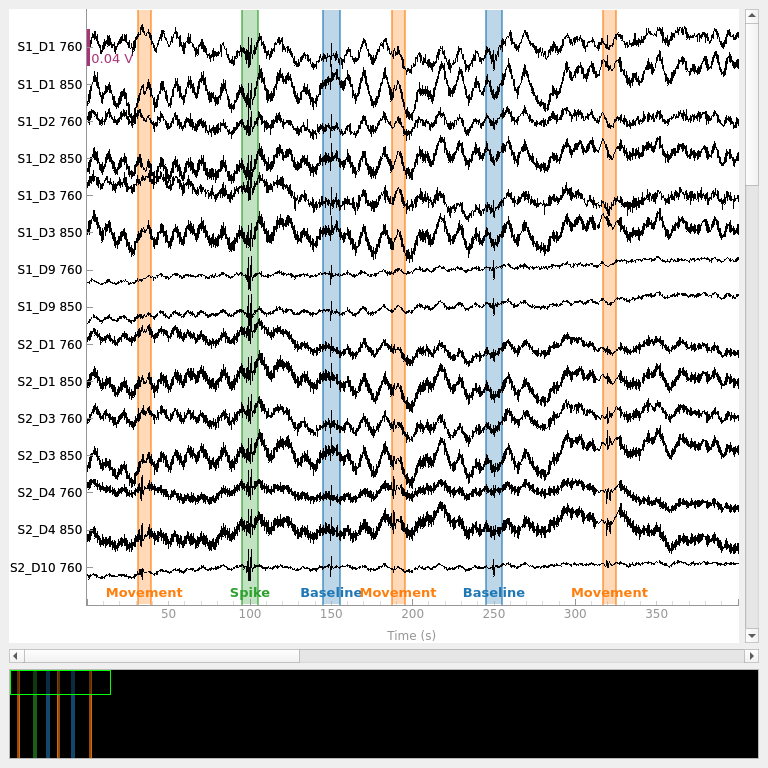Note
Go to the end to download the full example code or to run this example in your browser via Binder.
Artifact Correction Techniques#
Here we artificially introduce several artifacts in a functional near-infrared spectroscopy (fNIRS) measurement and observe how artifact correction techniques attempt to correct the data.
# Authors: Robert Luke <mail@robertluke.net>
#
# License: BSD (3-clause)
import os
import mne
from mne.preprocessing.nirs import (
optical_density,
temporal_derivative_distribution_repair,
)
Import data#
Here we will work with the fNIRS motor data. We resample the data to make indexing exact times more convenient. We then convert the data to optical density to perform corrections on and plot these signals.
fnirs_data_folder = mne.datasets.fnirs_motor.data_path()
fnirs_cw_amplitude_dir = os.path.join(fnirs_data_folder, "Participant-1")
raw_intensity = mne.io.read_raw_nirx(fnirs_cw_amplitude_dir, verbose=True)
raw_intensity.load_data().resample(3, npad="auto")
raw_od = optical_density(raw_intensity)
new_annotations = mne.Annotations(
[31, 187, 317], [8, 8, 8], ["Movement", "Movement", "Movement"]
)
raw_od.set_annotations(new_annotations)
raw_od.plot(n_channels=15, duration=400, show_scrollbars=False)

Loading /home/circleci/mne_data/MNE-fNIRS-motor-data/Participant-1
<mne_qt_browser._pg_figure.MNEQtBrowser object at 0x7972e140eb70>
We can see some small artifacts in the above data from movement around 40, 190 and 240 seconds. However, this data is relatively clean so we will add some additional artifacts below.
Add artificial artifacts to data#
Two common types of artifacts in NIRS data are spikes and baseline shifts. Spikes often occur when a person moves and the optode moves relative to the scalp and then returns to its original position. Baseline shifts occur if the optode moves relative to the scalp and does not return to its original position. We add a spike type artifact at 100 seconds and a baseline shift at 200 seconds to the data.
corrupted_data = raw_od.get_data()
corrupted_data[:, 298:302] = corrupted_data[:, 298:302] - 0.06
corrupted_data[:, 450:750] = corrupted_data[:, 450:750] + 0.03
corrupted_od = mne.io.RawArray(
corrupted_data, raw_od.info, first_samp=raw_od.first_samp
)
new_annotations.append([95, 145, 245], [10, 10, 10], ["Spike", "Baseline", "Baseline"])
corrupted_od.set_annotations(new_annotations)
corrupted_od.plot(n_channels=15, duration=400, show_scrollbars=False)

<mne_qt_browser._pg_figure.MNEQtBrowser object at 0x7972e2e1f430>
Apply temporal derivative distribution repair#
This approach corrects baseline shift and spike artifacts without the need for any user-supplied parameters FishburnEtAl2019.
corrected_tddr = temporal_derivative_distribution_repair(corrupted_od)
corrected_tddr.plot(n_channels=15, duration=400, show_scrollbars=False)

<mne_qt_browser._pg_figure.MNEQtBrowser object at 0x7972cbba7ed0>
We can see in the data above that the introduced spikes and shifts are largely removed, but some residual smaller artifact remains. The same can be said for the artifacts in the original data.
References#
Frank A Fishburn, Ruth S Ludlum, Chandan J Vaidya, and Andrei V Medvedev. Temporal derivative distribution repair (tddr): a motion correction method for fNIRS. NeuroImage, 184:171–179, 2019. doi:10.1016/j.neuroimage.2018.09.025.
Total running time of the script: (0 minutes 6.989 seconds)
Estimated memory usage: 501 MB